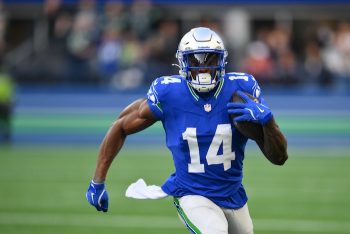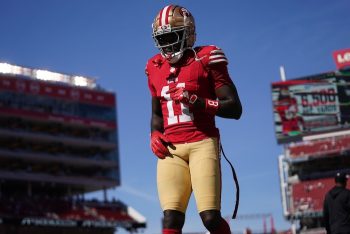Sports
NBA Roundtable: Grading Each of the Rookie Extensions

On an eventful October Monday, seven players from the 2021 and ‘22 draft classes (plus Moses Moody a day ago) signed their first extensions. Our group of NBA experts has been asked to analyze and grade each extension.
Alperen Şengün: Five years, $185 million
For months, Alperen Şengün remained without a contract extension, despite all of his 2021 Draft contemporaries — Cade Cunningham, Evan Mobley, Scottie Barnes and Franz Wagner — all inking lucrative five-year deals over the summer. It seemed as though Şengün and the Houston Rockets would wait until next year to maximize the team’s cap space by taking advantage of his lower cap hold, a la Tyrese Maxey and the Philadelphia 76ers in 2023.
Instead, Şengün will ink a five-year, $185 million deal (player option final year) that comes at a discount to the Rockets and undersells his abilities. His aforementioned peers all nabbed five-year, $224 million rookie max extensions. Sengun is certainly of their caliber, but did not. He is a budding offensive star, a gymnast in the post with ridiculous force, footwork and flexibility. His play-finishing in the pick-and-roll blossomed alongside Fred VanVleet last season, while his own facilitating is dazzling and creative — even if it could benefit from added discretion at times.
This feels like a contract defined and priced by the player he is now rather than the one he can become over its duration beginning in 2025-26. I’m pretty surprised Şengün accepted it, but a player option for the final season allows him to enter free agency a year earlier smack dab in the middle of his prime. The dude is very good and has improved immensely over his three seasons. It’s a bargain for Houston, but also one that gives the player himself more freedom than usual with these deals. Good stuff. – Jackson Frank
Grade: A
Jalen Johnson: Five years, $150 million
Atlanta locked up its prized ascending star, inking Johnson on a player and team-friendly extension. Johnson will make $30 million in average annual value, taking up just over 21% of the NBA’s $140 million salary cap. As the cap spikes and contracts balloon over the next few years, his contract will take up even less space.
It’s a deal with the potential to end up as a heist. Johnson can reach All-Star status with an All-NBA appearance or two squarely in his range of outcomes. The 6’8 22-year-old emerged last season as a dynamic two-way forward. He’s a unique scoring and playmaking weapon with outlier size and a high-impact defender already.
Johnson fits snugly with Trae Young, covering for his defensive limitations and scoring off of his gravity. Reaching Johnson’s creation potential would help reduce some of Young’s astronomical scoring load. For a player making less money annually than Jordan Poole and DeAndre Ayton, the Hawks did well to lock up their most critical young player. – Ben Pfeifer
Grade: A
Jalen Suggs Five years, $150 million
After a career year that saw him earn All-Defensive Second Team and shoot 40 percent from deep for a feisty, upstart Orlando Magic squad, Jalen Suggs has agreed to a five-year, $150 million extension. It’ll keep him in central Florida for the next six years and ensures Orlando has secured another building block after extending do-it-all wing Franz Wagner this summer.
Suggs’ defensive prowess has popped from the outset even as the offense required more time to crystallize. Incremental progress offensively coalesced in a significant step forward in 2023-24, rendering him one of the league’s most intriguing connective players. This extension is both a bet on Suggs to continue playing as he did a season ago and maintain his development as a ball-handler.
Despite shooting 39.7 percent beyond the arc in Year 3, he’s still just a 33.3 percent long-range shooter for his career. He also transformed from a 59 percent finisher at the rim to a 68% one. These are the driving forces behind his breakout. To solidify himself as a mainstay in the Magic’s core, he must prove those aren’t outliers and are rather the product of genuine growth.
The Suggs of last season can deliver on that $30 million per year investment. It’s basically the going rate for high-level role players and above-average starters these days. That’s who he was this past year. A Suggs who becomes further qualified as a ball-handler and playmaker while offering the same level of versatile defense, off-ball shooting and fearless finishing would be playing at a discount. A Suggs who regresses into the shooter and finisher of his first two seasons is a sticky fit with the Magic, someone whose defense is exquisite but is hard to play big minutes because of the offensive woes.
There’s a little more variance in the value of this deal than preferred, but I believe in Suggs’ game and envision many paths where everyone benefits here. – Jackson Frank
Grade: B+
Trey Murphy: Four Years, $112 million
Trey Murphy III has the potential to be one of the best role players in the NBA (think OG Anunoby/Mikal Bridges caliber player). He is huge (7-foot wingspan), can shoot (career 39.2% 3-point shooter), attack closeouts, finish plays with explosive lobs (finished second in the 2023 Slam Dunk Contest), provides secondary rim protection (64th percentile block rate among wings, per Cleaning the Glass), accumulates steals (53rd percentile), and defends the perimeter (71st percentile Defensive Estimated Plus-Minus).
Earlier, we cited a formula for projecting a player’s projection value. According to that method, Murphy should make 19.6 million dollars in 2025-26 (5.5 million dollars more than he will be). But that’s because a preseason meniscus injury limited him to 57 games. If he had played 79 games in 2023-24 (the amount he played in 2022-23), he’d be worth 27.2 million dollars – a little bit more than what he’s making!
You also have to factor in that Murphy is 24 years old and only getting better. So, estimating his production value by looking at his output from previous seasons is probably underrating his impact. No matter how you slice this one, the fact that the New Orleans Pelicans locked Murphy up (for way less than the rookie max extension) is a massive, massive win. – Mat Issa
Grade: A+
Jalen Green: Three years, $106 million (player option)
In what some have called the “most unique” rookie extension yet, Jalen Green signed a shorter, 2+1 deal instead of the typical four or five years. Green hasn’t broken out like Houston has hoped, resulting in a shorter-term contract. If Green doesn’t progress into a star, Houston can still attempt a star trade with him for salary matching.
This contract represents a bet on Jalen Green’s improvement. He hasn’t consistently maintained strong efficiency, decision-making lapses or defensive play. We’re yet to see if Green can develop into a consistent on-ball creator or if he’ll be relegated to microwave scorer duty. Regardless of the length of the contract, 25% of the NBA’s $140 million salary cap is a hefty price.
Jalen Green’s fit with Houston’s core, notably Alperen Şengün, hasn’t always been smooth. How will Houston manage and prioritize Green and Sengun with Amen Thompson, Jabari Smith, Cam Whitmore and Reed Sheppard? It’s a significant gamble for the Rockets, but Green is talented enough to prove this deal prescient. – Ben Pfeifer
Grade: C-
Corey Kispert: Four years, $54 million
This Kispert deal is a much more fleshed-out version of the Moody one, and rightfully so because Kispert is a more idealized version of Moody. Kispert has become an elite shooter – hitting on 39% of his threes in his first three seasons in Washington over almost six attempts a game. He’s also improved off the bounce, making plays off of hand-offs, closeouts, and even some second-side reads that help grease the wheels of the Wizards offense.
Admittedly, this contract makes him extremely tradeable down the road, and it’s a clean bit of business for Washington, who has recently inked Kispert, Jonas Valanciunas, Kyle Kuzma, and Deni Avdija to team-friendly deals primed to be traded to teams looking to improve.
That said, the Wizards might also just like Kispert and view him as a part of their plans, at least temporarily, to build competence around their young developmental pieces in Bilal Coulibaly, Alex Sarr, and Bub Carrington. – Esfandiar Baraheni
Grade: A
Moses Moody: Three years, $39 million
There are two ways you can look at this deal. Moody has not been a consistent part of the Warriors rotation for his first three seasons in the league, and he’s been inconsistent offensively because of it. So, paying him a mid-level exception is a reach.
At the same time, every single time Moody is on the floor for the Warriors, he wins his minutes. Especially last season, when he was a plus defensively and helped them stay afloat while they missed Andrew Wiggins on the wings. While he has hovered at around 36% as a shooter in his three seasons, his attempts have gone up, and if this extension indicates he is a long-term part of their plans, then he should get even more opportunity this season.
From the Dubs’ perspective, this is a win purely because Moody is still only 22 and makes them versatile defensively, all while fitting into Steve Kerr’s offensive philosophy. He constantly makes the right plays, and that’s really all you need to do when you’re on a team with Steph Curry and Draymond Green. – Esfandiar Baraheni
Grade: B+
Jaden Hardy: Three years, $18 million
Last year, Jaden Hardy struggled in the regular season, placing in the 15th percentile in scoring volume (measured by true shooting) and the 20th percentile in Estimated Plus-Minus (EPM, Dunks & Threes). Based on a formula I like to use for estimating production value, Hardy would be lucky to get a minimum contract. Let alone one that pays him nearly 5.6 million in 2025-26 (per Spotrac).
But the Dallas Mavericks aren’t paying for what he has been. They are paying for what he can be. In theory, Hardy exists in the same archetype as guys like Jordan Poole, Anfernee Simons, and Malik Monk – combo guards who aren’t natural primary creators, but can get hot enough where they can occasionally masquerade as one.
Hardy has demonstrated flashes of actualizing this prophecy with a strong end to his rookie season and some meaningful minutes during the Mavericks’ Finals run.
https://x.com/danfavale/status/1795642766753775808
And when you look at how much the Pooles (average annual value of 32 million), the Simons’ (25 million), and the Monks (19.5 million) are getting, the Mavericks are getting Hardy at a great price. Yes, there is a chance that he never becomes a quality sixth man (that possibility is baked into the grade below). But if it were a guarantee, they also wouldn’t be getting him for such a cheap price, now would they? Plus, the third year is a team option. So, the Mavericks can cut their losses if this dream doesn’t become a reality. – Mat Issa
Grade: A-











